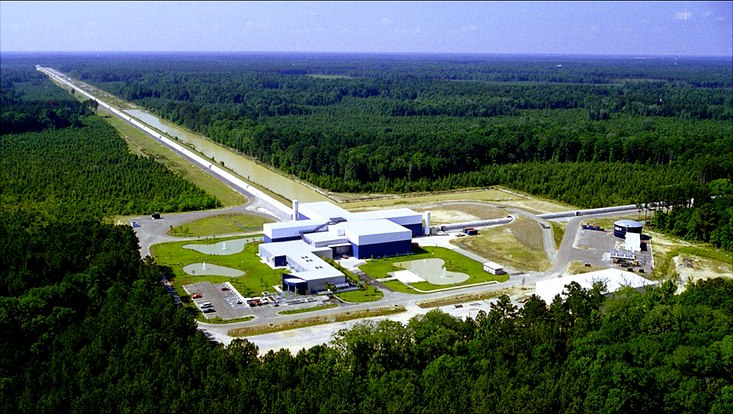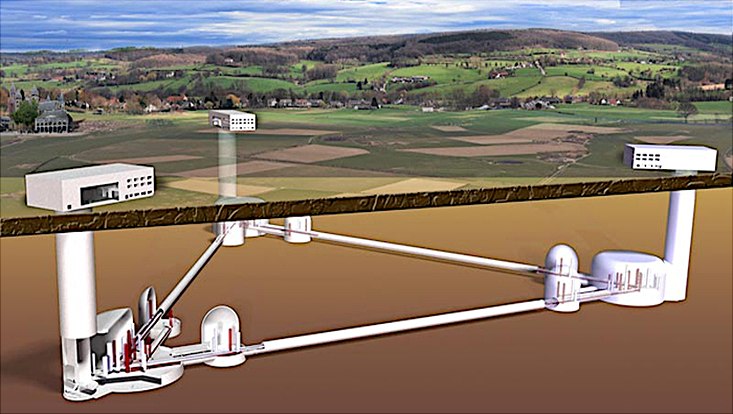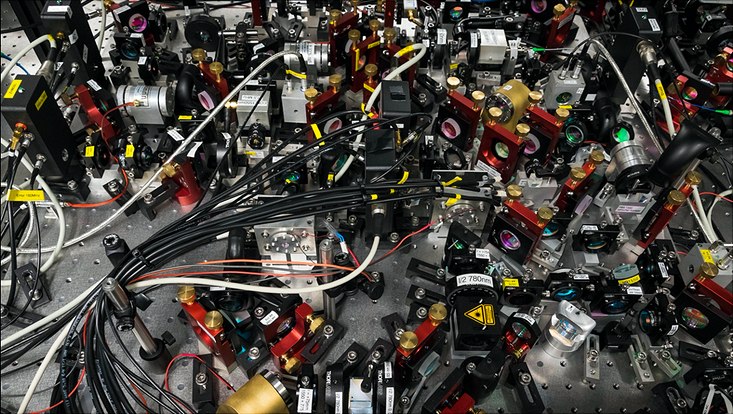Research Area Gravitational Waves
The Earth is constantly flooded by gravitational waves. These are tiny oscillations of space-time originating from astrophysical events in the past. Predicted by Albert Einstein in 1916 in his General Theory of Relativity, it was only in 2015 that the Laser Interferometer Gravitational-Wave Observatory (LIGO) directly observed the first gravitational wave pulse. This pulse was created by two black holes colliding and merging at a distance of 1.3 billion light-years.
Today many more such events have been detected including mergers of other compact sources (such as neutron stars) in which case also a bright flash of light is emitted. The observation of this light is particularly powerful to refine our understanding of astrophysical properties of the universe.
The detection of gravitational waves has opened a new observational channel into the universe and created a new branch termed gravitational wave astronomy. It will improve our understanding of the history of the universe from its very beginning up to the late universe.
The QU-cluster is one of the leading centers for gravitational wave research in Germany with a scientific focus on three central aspects:
- The development of new cutting-edge technology for the next generation of ground- and space-based gravitational wave observatories such as the Einstein Telescope and LISA. In order to reduce the background noise and improve the sensitivity of a telescope, laser light with a "squeezed" quantum uncertainty has to be used. In addition, ultra-cold laser mirrors are suspended as pendulums and continuous monitoring of the seismic motion of the ground together with clever artificial intelligence modeling of how the seismic disturbs the observatory is employed.
- All gravitational wave observations to date are of astrophysical origin where macroscopic compact objects spiral into each other at a comparatively late stage in the history of the universe. Numerical and analytic methods are developed to extract new information about a variety of astrophysical properties of the merging objects and their emanating gravitational waves.
- One of the excitements of the new observational channel is the potential to receive signals from the earliest phase of our universe where so far we only have theoretical and indirect knowledge. In order to prepare the observations as well as the analysis of the data, the signals from all possible cosmological sources such as inflation, cosmological phase transitions, topological defects and axion dynamics are studied.
Involved scientists
Area Coordinator: Stephan Rosswog
Principal Investigators: Robi Banerjee, Oliver Gerberding, Christophe Grojean, Florian Grüner, Dieter Horns, Thomas Konstandin, Thomas Kupfer, Axel Lindner, Jochen Liske, Jan Louis, Rafael Porto, Stephan Rosswog, Roman Schnabel, Géraldine Servant, Günter Sigl, Alexander Westphal
Key Researchers: David Berge, Francesco de Gasperin, Katharina Isleif, Mikhail Korobko, Marek Kowalski, Mathias Pierre, Martin Pohl, Christoph Reinhardt, Jörn Schaffran, Jan-Torge Schindler, Marc Wenskat




